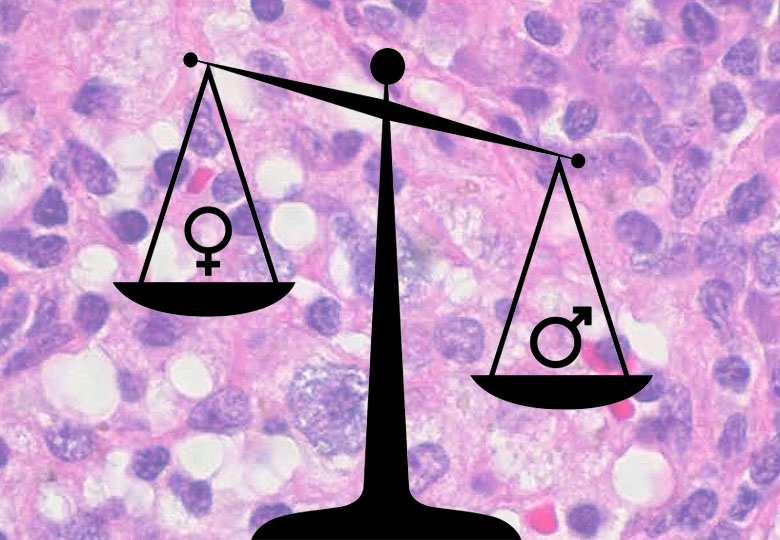Deborah Oakley

Scientists must stop excluding female animals and cells from research, said Art Anold when he visited the CSC
Many diseases affect men and women in different ways. Men are more likely to have autistism than women, while women are around three to four times more likely to develop multiple sclerosis than men. But scientists do not understand exactly what causes these differences.
“Do men have something that protects them from multiple sclerosis? If we can find out what it is that protects men from the condition, we may one day be able to harness it and develop new treatments for both sexes,” said Art Arnold, who studies the biological factors that make men and women different at the University of California.
Arnold visited the MRC’s Clinical Sciences Centre (CSC) at Imperial College London last month, to update scientists on issues of gender bias in biomedical research – and why he thinks it urgently needs to change.
Introducing Arnold to his audience, Irene Miguel-Aliaga, head of the CSC’s Gut Signalling and Metabolism group, said, “I regard some of his papers as some of the most influential I have ever read. His research has brought a new dimension to the field.”
For example, it has widely been assumed that most differences between men and women are caused by sex hormones, produced by the testes in men and ovaries in women. In his lab Arnold has shown that genes from the sex chromosomes X and Y also play a role, and act outside of the testes and ovaries. This could hold clues to why men and women experience illnesses and respond to treatments differently.
He told the audience that although studies on patients and volunteers now recruit roughly equal numbers of men and women, this practise has not trickled down to researchers who study animals and cells. Many scientists use exclusively male animals, and neglect to consider how such imbalance could affect their results, said Arnold.
So why do scientists favour male subjects? It has traditionally been thought that females with menstrual cycles and fluctuating hormone levels have a less constant environment inside their bodies than males, making them poor test subjects. But Arnold said that this is a myth, and that research from his lab at the University of California has shown that when it comes to scientific research, women and men are comparable subjects.
The National Institutes of Health in the United States has taken action to address the issue. In 2016, it will require all grant applicants to study both sexes, or stipulate why they’re not doing so.
In Europe, applicants to the ‘Horizon 2020’ funding scheme are asked to include gender analysis in their grant proposals. The European Commission has also produced a report that considers how gender analysis can contribute to research.
Arnold first discussed the issue with CSC scientists three years ago, and said he was pleased to come back and continue to raise awareness of this important matter.
Find out more about Arnold’s research.
For further information, contact:
Deborah Oakley
Science Communications Officer
MRC Clinical Sciences Centre
Du Cane Road
London W12 0NN
T: 0208 383 3791
M: 07711 016942
E:
